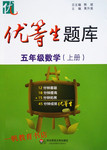题目内容
,when Marx was already ,he began to learn Russian.
A.In 1870s; in his fifties
B.In 1870s; in fifties
C.In the 1870s; in his fifties
D.In the 1870s; in fifties
练习册系列答案
 优等生题库系列答案
优等生题库系列答案
相关题目
题目内容
,when Marx was already ,he began to learn Russian.
A.In 1870s; in his fifties
B.In 1870s; in fifties
C.In the 1870s; in his fifties
D.In the 1870s; in fifties
 优等生题库系列答案
优等生题库系列答案